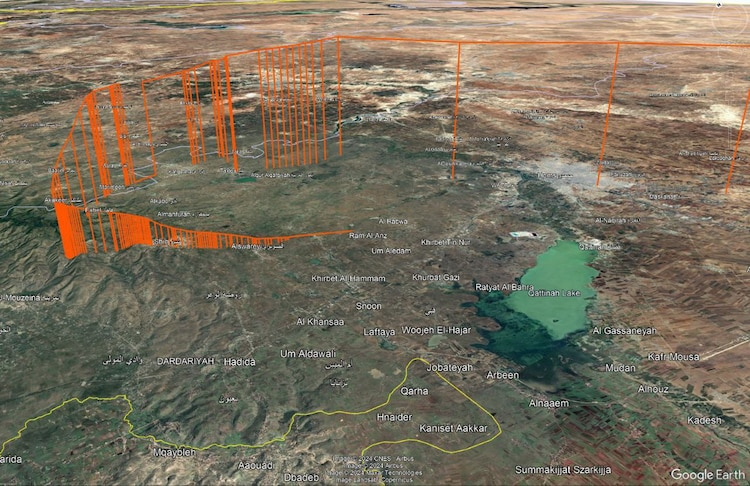As Syria grapples with the fallout of years of civil war, rumors swirl over the fate of President Assad following reports of a Syrian Air flight disappearing mid-flight.
The alleged crash, coinciding with rebel forces seizing control of Damascus, has fueled speculation of a possible end to Assad’s contentious rule. Here’s what we know so far.
The Disappearance of the Syrian Air Flight
The aircraft in question, an Ilyushin Il-76T operated by Syrian Air, took off from Damascus airport amid growing tensions in the capital. Rebel forces had reportedly made significant advances, marking one of the most critical moments in Syria’s protracted civil war.
The flight was tracked initially heading toward the coastal region of Latakia, an area considered a regime stronghold due to the presence of Russian forces.
However, the aircraft’s trajectory took a puzzling turn. It reversed course mid-air and began flying in the opposite direction toward Homs. This erratic maneuver raised eyebrows among observers monitoring the flight on platforms like Flightradar24. Shortly thereafter, the plane disappeared from radar.
Open-source data indicated a dramatic drop in altitude, descending from 3,650 meters to 1,070 meters in a matter of minutes before vanishing entirely.
Read : President Assad Flees Syria as Rebels Enter Damascus
The sudden loss of signal and unusual flight behavior have led to theories that the plane either suffered mechanical failure or was targeted as it crossed Homs, a region with strong rebel activity.
Here is the screen recording on Flight Radar of SYR9218 going off the radar. Allegedly, with Assad on board. #Syria pic.twitter.com/cK3Dd3yLjI
— SpiltyTea (@Spiltea) December 8, 2024
Analysts noted that the aircraft’s older transponder and reports of GPS jamming in the area could explain discrepancies in flight data, but the possibility of deliberate action cannot be ruled out.
Was Assad on Board?
Amid the confusion, one question looms large: Was Bashar al-Assad on the ill-fated flight? Sources within Syria suggest there is a “very high probability” that Assad was aboard the plane.
Reports from Reuters and other agencies cited Syrian insiders who claimed the aircraft might have been an escape attempt by the embattled president as his government crumbled under rebel advances.
Egyptian journalist Khaled Mahmoud added fuel to the fire by tweeting about the crash’s suspicious nature. He claimed the sudden altitude drop pointed to the plane being shot down, a theory echoed by several experts analyzing the flight path and data.

Assad’s potential destination has also come under scrutiny. Some believe the plane was en route to Russia’s Latakia airbase, a key stronghold for the regime and a haven for Assad during critical moments of the civil war. Latakia is one of the few areas untouched by rebel forces, making it a logical escape point for Assad and his close aides.
Yet, despite the mounting speculation, no official confirmation has emerged about the passengers on the flight. Syrian state media has remained tight-lipped, adding to the growing uncertainty and leaving the world to ponder whether Assad’s reign has come to a dramatic and tragic end.
What Does Assad’s Possible Death Mean for Syria?
The implications of Bashar al-Assad’s possible death are monumental for Syria and the broader region. For over a decade, Assad has been a central figure in Syria’s devastating civil war, a leader whose regime has faced accusations of war crimes, chemical weapon use, and widespread human rights abuses.
If Assad has indeed been killed, it marks a pivotal moment in the country’s history. Rebel forces have already declared victory, with jubilant celebrations reported in Damascus and other key cities. The fall of the Assad regime would signify the end of nearly five decades of rule by the Assad family, beginning with Hafez al-Assad in 1970.

However, the potential power vacuum left by Assad’s death could plunge Syria into further chaos. The civil war has already fragmented the nation into various factions, including Islamist groups, Kurdish militias, and rebel coalitions. Without a central authority, these groups may jostle for control, leading to prolonged instability.
Moreover, Assad’s death could shift the dynamics of international involvement in Syria. Russia and Iran, key allies of the Assad regime, may reevaluate their strategies, while Western nations could seek to influence the post-Assad political landscape. For ordinary Syrians, however, the immediate concern will be safety and the hope for a semblance of normalcy after years of violence.
As speculation continues to swirl around the disappearance of the Syrian Air flight and the fate of Bashar al-Assad, the world watches with bated breath.
Whether or not Assad was on the ill-fated plane, the events signal a turning point in Syria’s protracted civil war. The fall of Damascus and the apparent collapse of the regime mark the end of an era, but the future of Syria remains uncertain.
The coming days will likely provide more clarity about Assad’s whereabouts or demise, but for now, Syria stands on the cusp of a new chapter—one filled with both hope and uncertainty.
let’s enjoy few years on earth with peace and happiness….✍🏼🙏

